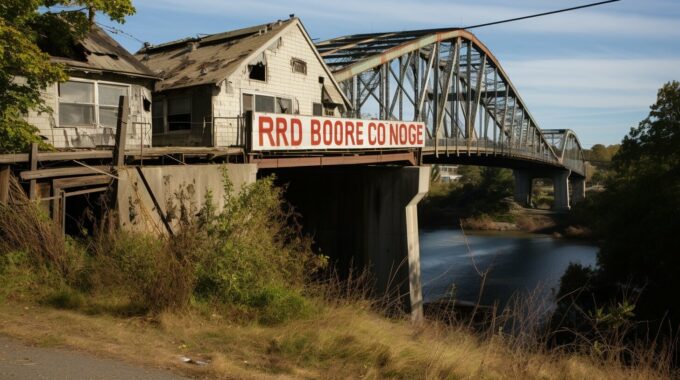GAP Investments offers hard money lender partnerships Costa Rica. Get tailored financing with interest rates from 12% to 18% annually.

Understanding Property Bridge Loans GAP Equity in the US
Property bridge loans and GAP Equity are valuable financial tools that can enhance real estate investments in the US during transitional periods. Bridge loans, also known as swing loans, provide short-term financing that can be used to fund the purchase of a new home before selling an existing property. These loans bridge the gap between homes and provide the necessary funds to facilitate a smooth transition.
While bridge loans offer several advantages, it is crucial to consider both the pros and cons. On the positive side, bridge loans allow individuals to buy a new home before selling the current one, enabling them to make offers without sale contingencies. However, it is important to note that bridge loans usually come with higher interest rates and the risk of managing two mortgages simultaneously. It’s essential to be aware of these potential drawbacks before opting for a bridge loan.
When considering a bridge loan, it is advisable to shop around and compare different options. Bridge loans can vary in terms, conditions, and fees, so it’s crucial to find the best deal that suits your needs. Additionally, there are alternative financing options to bridge loans, such as home equity loans, home equity lines of credit (HELOC), and 80-10-10 loans. Exploring these alternatives can provide individuals with a broader range of choices for short-term financing.
- Property bridge loans are short-term financing options used during transitional periods in real estate transactions.
- Bridge loans bridge the gap between homes, allowing individuals to purchase a new home before selling their current property.
- Bridge loans have advantages, such as making offers without sale contingencies, but also come with higher interest rates and the risk of managing two mortgages simultaneously.
- It is important to shop around and compare different bridge loan options to find the best deal.
- Alternative financing options to bridge loans include home equity loans, home equity lines of credit (HELOC), and 80-10-10 loans.
Costa Rican Property Bridge Loans GAP Equity: Borrow Against Your Property
Costa Rican property bridge loans GAP Equity offer individuals the opportunity to use their Costa Rican property as collateral to secure short-term financing for real estate investments. These loans provide a flexible and convenient funding solution for those who are looking to invest in distressed properties in Costa Rica.
With Costa Rican property bridge loans GAP Equity, individuals can borrow against the value of their property with loan amounts starting from $50,000. This allows investors to access the funds they need to seize opportunities in the market without having to wait for the sale of their existing property. The loan terms range from 6 months to 3 years, providing borrowers with ample time to complete their real estate projects.
One of the advantages of Costa Rican property bridge loans GAP Equity is the speed of funding. These loans offer a quick and efficient solution for those who need immediate financing for real estate investments. Additionally, the interest rates for these loans typically range from 12% to 16%, providing borrowers with a competitive financing option.
“Costa Rican property bridge loans GAP Equity offer individuals the flexibility and financial support needed to invest in distressed properties in Costa Rica. These loans serve as a temporary financing option that allows investors to take advantage of real estate opportunities without the constraints of traditional financing methods.”
When considering Costa Rican property bridge loans GAP Equity, it’s important to weigh the advantages and disadvantages. While these loans provide temporary financing and quick access to funds, borrowers should be aware of the higher interest rates and the potential risk of managing multiple mortgages. It is crucial to conduct thorough research and carefully analyze individual financial situations before committing to a bridge loan.

Costa Rican property bridge loans GAP Equity offer individuals the opportunity to use their property as collateral for short-term financing in real estate investments. These loans provide quick access to funds, flexible terms, and competitive interest rates. However, borrowers should consider the risks and ensure they have a solid financial plan in place before committing to a bridge loan. By understanding the benefits and limitations of Costa Rican property bridge loans GAP Equity, investors can make informed decisions and maximize their real estate opportunities in Costa Rica.
Exploring Property Bridge Loans and GAP Equity for Real Estate Investments
Property bridge loans and GAP Equity are valuable tools in the US real estate market, offering individuals and businesses the opportunity to finance transitional periods and make strategic investments. These financing options can provide the necessary funds to bridge the gap between buying a new property and selling an existing one, facilitating a smooth transition for homeowners and investors.
Bridge loans, also known as swing loans, are commonly used in real estate transactions to finance the purchase of a new home before selling the current residence. They allow individuals to make offers without sale contingencies and secure their desired property. By accessing short-term financing, borrowers can take advantage of opportunities in a competitive market.
While bridge loans offer numerous advantages, such as flexibility and quick funding, it’s important to consider the potential drawbacks. These loans typically come with higher interest rates and fees, as well as the risk of owning two properties and managing multiple mortgages simultaneously. Therefore, it’s crucial to shop around for the best terms and conditions to ensure cost-effectiveness.
For those seeking alternatives to bridge loans, other options include equity-based loans, such as home equity loans and home equity lines of credit (HELOC), as well as 80-10-10 loans. These financing methods utilize existing property equity to provide funds for new purchases or investments. Qualifying for a bridge loan or alternative financing solutions often requires a good credit score and a low debt-to-income ratio.
Understanding the intricacies of property bridge loans and exploring alternative options can empower individuals and businesses to make informed decisions in the US real estate market. By carefully evaluating the pros and cons of each financing method and considering individual circumstances, borrowers can navigate transitional periods and capitalize on investment opportunities.
FAQ
What are bridge loans?
Bridge loans, also known as swing loans, are short-term financing options typically used in real estate transactions. They bridge the gap between buying a new home and selling the existing property.
What are the advantages of bridge loans?
Bridge loans allow individuals to buy a new home before selling their current one. They also enable buyers to make an offer without sale contingencies, providing more flexibility in the purchase process.
What are the disadvantages of bridge loans?
Bridge loans often come with higher interest rates compared to traditional mortgages. Additionally, there is a risk of owning two houses and managing two mortgages simultaneously, which can increase financial responsibilities.
Are there alternatives to bridge loans?
Yes, there are alternative financing options, such as home equity loans, home equity lines of credit (HELOC), and 80-10-10 loans. These options may have different terms, conditions, and fees, so it’s important to explore and compare them.
How can I qualify for a bridge loan?
To qualify for a bridge loan, it’s essential to have a good credit score and a low debt-to-income ratio. Lenders typically assess your financial stability before approving the loan.


